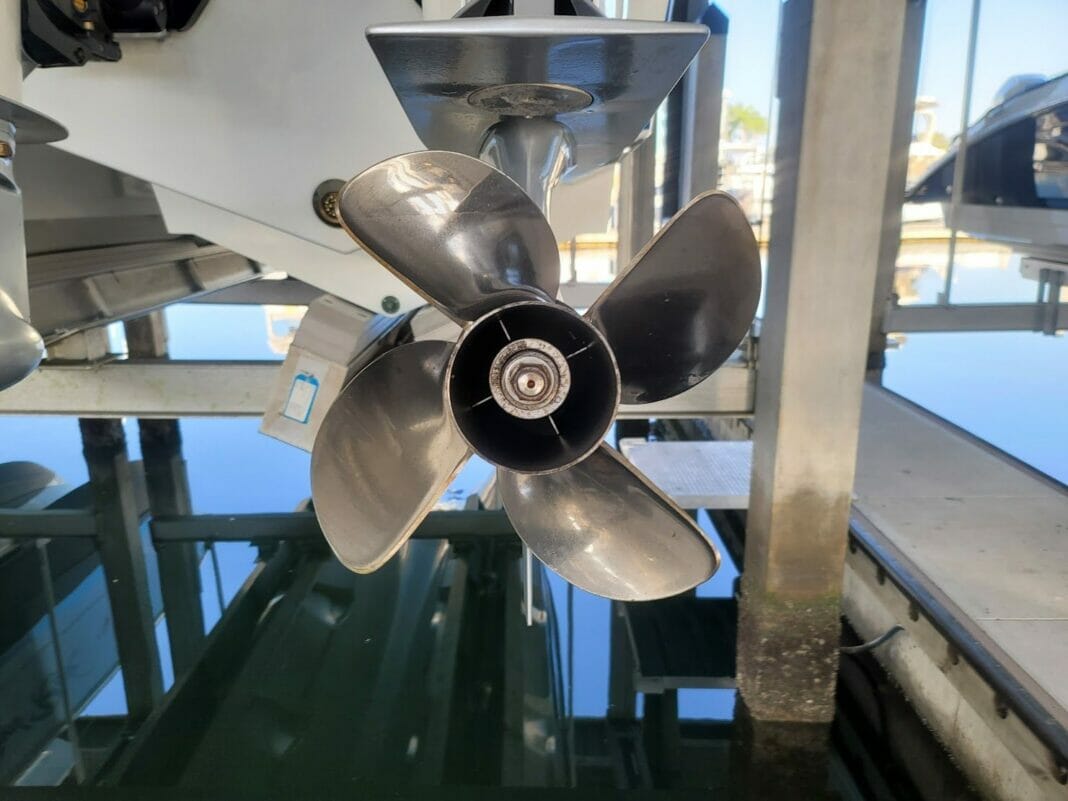A boat’s propeller is an essential component that converts the engine’s power into thrust, allowing the boat to move through the water. The right propeller not only improves the boat’s performance but also enhances fuel efficiency and protects the engine from damage. A key element in selecting the right propeller is understanding propeller pitch, which is a vital factor in the propeller’s performance. This article will discuss the importance of propeller pitch, how to measure it, the concept of cupping, and how to choose the right pitch for your boat.
Introduction to Propeller Pitch
Propeller pitch refers to the theoretical distance a propeller would travel through a solid medium in a single revolution or a complete 360-degree turn. The pitch is, in essence, the measure of a propeller’s “bite” or “grip” on the water, and it directly impacts the boat’s speed and acceleration. When choosing a propeller, pitch is a crucial parameter as it significantly influences the boat’s performance.
A higher pitch propeller will typically have a greater top-end speed but may suffer slower acceleration. Conversely, a lower pitch propeller will usually give you faster acceleration but may have lower maximum speed. In ideal conditions, a propeller’s pitch should allow the engine RPM (revolutions per minute) to fall within the manufacturer’s recommended range when running at wide-open throttle (WOT).
Measuring Propeller Pitch
Propeller pitch is measured in inches, with the value usually engraved on the side of the propeller hub. A propeller with a pitch of 15 inches, for example, would theoretically advance 15 inches through a solid medium in a single rotation. However, as water is not a solid medium, propellers usually slip somewhat in water, and actual travel will be less than the theoretical value.
Cupping and Its Impact on Propeller Pitch
You may have heard of the term ‘cupping’ when discussing propeller pitch. Cupping refers to a curve or lip at the edge of the propeller blade that enhances the blade performance. The purpose of cupping is to reduce propeller slippage, ventilations, and cavitation, allowing for better bite on the water.
Cupping can raise the effective pitch by up to half an inch to one inch, meaning a propeller with a 15-inch pitch but added cupping may perform similarly to a propeller with a pitch of 15.5 or 16 inches. When selecting a propeller, consider the effects of cupping.
Choosing the Right Propeller Pitch for Your Boat
Selecting the proper propeller pitch for your boat can depend on several factors such as the boat’s size, weight, intended use, and engine specifications. These factors are essential as they will influence your boat’s performance and engine efficiency.
Here are a few guidelines to help you choose the right propeller pitch:
Performance Needs
Evaluate the requirements of your boat. For example, do you prefer a faster top-end speed or faster acceleration? If you want to optimize for top speed, you may need a higher-pitch propeller. For quicker acceleration and additional load-bearing capabilities, a lower-pitch propeller may be the better choice.
Understand Your Engine
Refer to your engine’s specifications, primarily focusing on the recommended RPM range. You must select a propeller pitch that allows your engine to run within this range at wide-open throttle (WOT). Running the engine outside its recommended range can damage the engine and decrease its lifespan.
Test Different Propellers
The best way to determine the propeller pitch ideal for your boat is to test multiple propellers and assess their performance. Monitor the engine RPM, acceleration, speed, and fuel efficiency with different propellers until you find the one best suited for your boat and needs.
Consult a Professional
If you are unable to determine the correct propeller pitch or feel uncertain, consult a marine professional. They can help analyze your boat’s conditions and recommend the right propeller based on their experience and expertise.
Understanding propeller pitch and its impact on your boat’s performance is crucial in selecting the right propeller. The size, weight, and usage of your boat, as well as your engine’s specifications, should guide your decision when choosing the pitch. Finally, do not hesitate to consult a professional or test different propellers to find the perfect fit for your boat.


